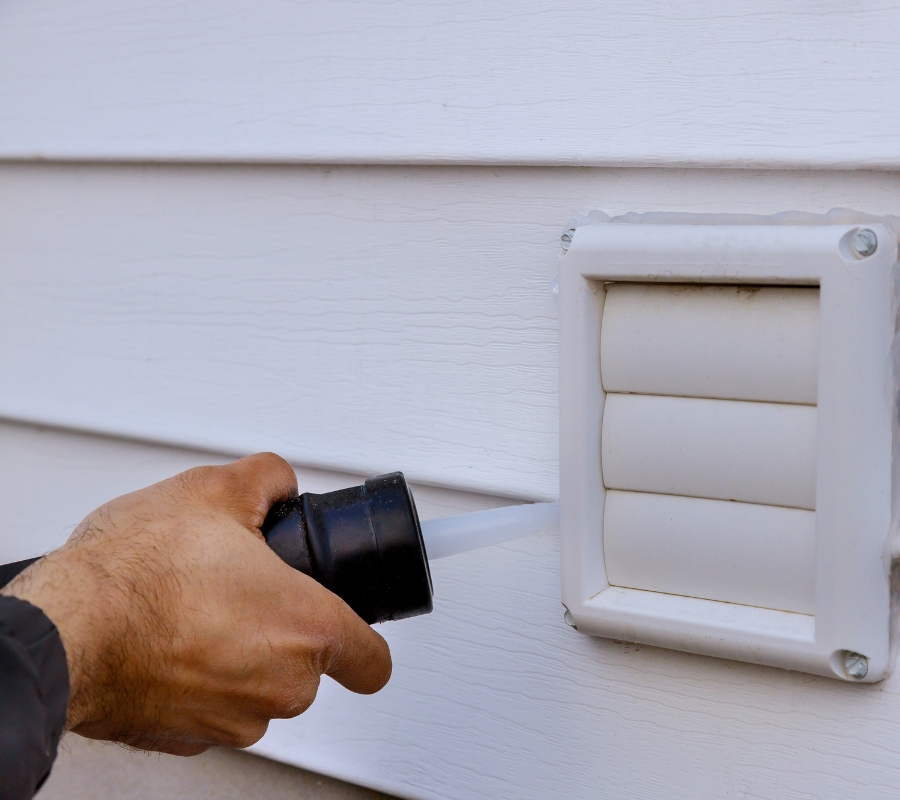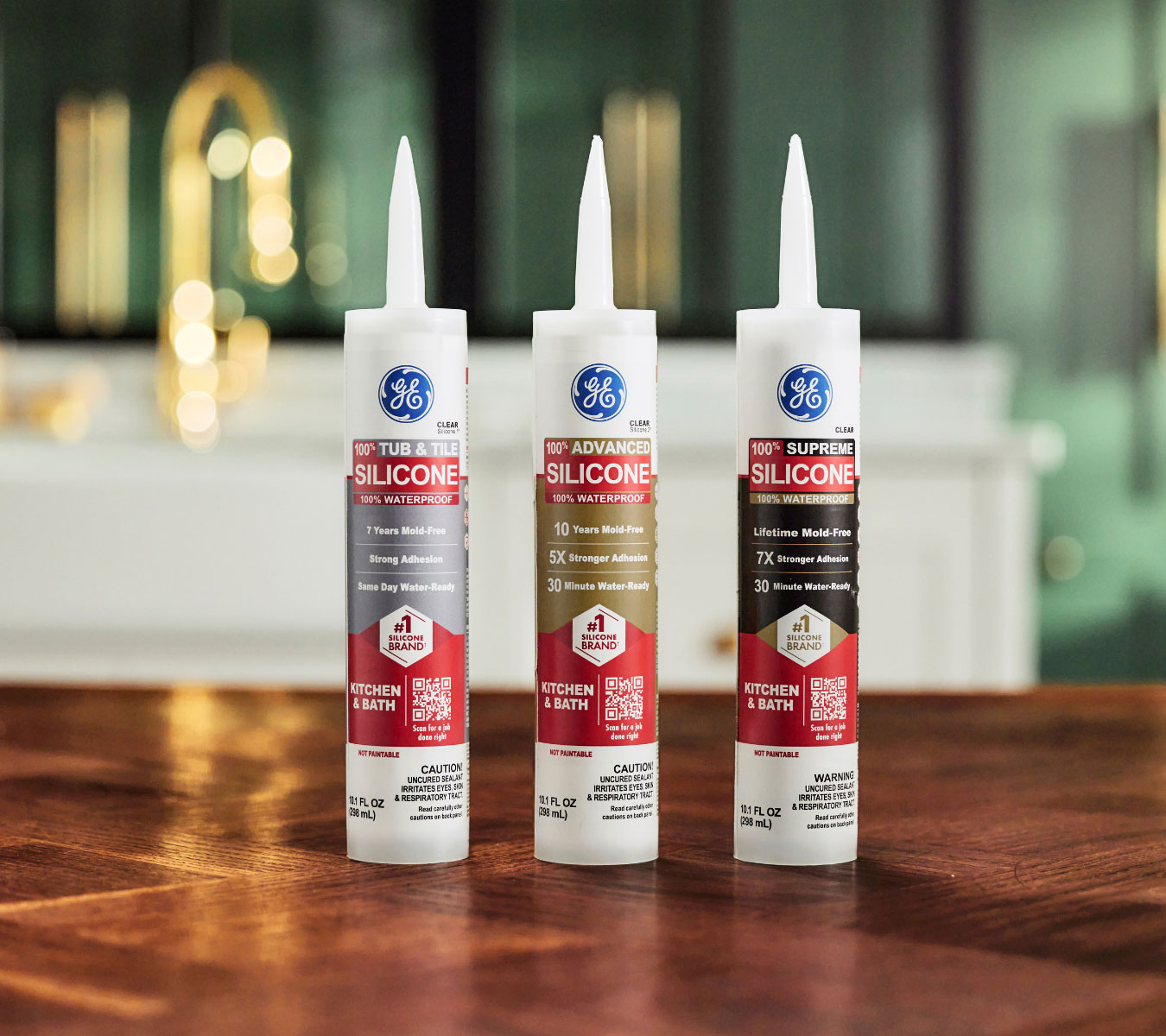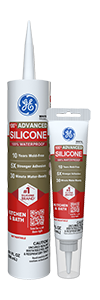Note: This DIY article is provided as a general guide only and is not intended to take the place of product-specific installation procedures; always follow applicable manufacturers’ instructions. Depending on your home’s age and condition, location within the home, and other potential factors, repairs and/or upgrades or other services may be necessary prior to the beginning and/or completion of your project that may involve the services of a home improvement professional. This article does not include advice pertaining to local building codes and/or any related inspections.
Most people don’t realize that regular sealant isn’t built for heat—until it cracks, shrinks, or peels away. Whether behind your stove, around a fireplace, or near an outdoor grill, using the wrong sealant in a hot zone is a mistake. This guide walks you through what makes a true high-temperature sealant, where it matters most, and which GE silicone products you can trust to hold up under heat.
Why heat destroys most sealants
If you’ve ever seen sealant crack or peel too soon, heat was likely behind it.
On a cool day, most sealants look fine. But introduce heat—and things change fast. Acrylic- and latex-based caulks begin to soften, shrink, or crack as temperatures rise. That joint behind your stove? The trim near your fireplace? They’re flexing, expanding, and drying out whenever they heat up. If moisture’s in the mix, failure comes even faster—steam and condensation break adhesion and invite mold.
Worse, many assume that any silicone sealant can handle high heat. It can’t. Some are for general indoor gaps or light water exposure—but not for thermal stress. That’s why cracks often show up weeks or months later.
This kind of failure is preventable. Next, we break down what separates a high-temp performer from the rest.
Heat doesn’t just warp metal—it destroys the wrong type of sealant from the inside out.
What to look for in a true high-temperature sealant
When heat exposure is part of the job, it’s not the label that tells you what works—it’s the specs. Plenty of silicone sealants are built for basic indoor gaps but fall short when exposed to sustained high temperatures.
If you’re sealing around a microwave, near a dryer vent, or beside a heater, you’ll need more than water resistance. You’ll need a sealant engineered to flex and hold when the heat stays on.
Here’s what to look for:
- 400°F service temperature rating—ensures it can handle real-world high heat once fully cured
- ASTM C920 certification, ideally Class 25, 35, or 50—measures how well the sealant flexes with joint movement
- Neutral-cure chemistry—safer for metals and non-corrosive around chrome or tile
- Mold resistance—essential in kitchens, bathrooms, or other moisture-prone areas
- Strong adhesion to surfaces like tile, metal, and glass—reduces the risk of peeling, separation, or early failure
Always check the technical data sheet—not just the label on the tube or cartridge. Because when heat, humidity, and structural movement combine, only the right formula holds its line.
Where high-temperature sealants matter most
Heat isn’t just found in one place. It shows up across your home—in tight corners, behind built-ins, and around appliances you use every day.
Some of the most common high-heat zones in the home include:
- The wall and backsplash behind your stove
- Trim around fireplaces and inserts
- Seams behind wall-mounted microwaves or ovens
- Dryer vent exits and baseboard heaters
- Metal edge near outdoor grills
- Flashing around exterior vent hoods
These areas deal with more than just warmth—they face direct heat, steam, temperature swings, and constant expansion and contraction. And if you’re using the wrong sealant, it won’t keep hold.

Wherever heat meets movement, you’re sealing against more than just air gaps. You’re sealing against failure. That’s why high-temperature sealants aren’t just helpful—they’re essential.
Top GE high-temperature sealants for different jobs
GE makes several silicone sealants that can handle the heat, but each one is formulated for a specific kind of job. Some are built for kitchens where moisture and steam never let up. Others are made for metal, movement, or outdoor exposure.
Matching the right sealant to the job saves rework, protects surfaces, and keeps your seal intact over time.
Here’s what to use where:
GE Advanced Silicone Kitchen & Bath
- Rated to 400°F, Class 35 movement, waterproof, and neutral cure
- Ideal for: stovetops, backsplashes, and high-moisture heat zones
GE Supreme Silicone® Kitchen & Bath
- 400°F tolerance, Class 50 for high movement, with 7x adhesion strength
- Ideal for: fireplace tile, vertical kitchen joints, or areas prone to flex
- Rated to 400°F, bonds to aluminum, steel, and other metals
- Ideal for: grills, exterior vents, or any joint sealed to metal
- 400°F capable, Class 25 movement, weather-grade
- Ideal for: outdoor vertical joints or flashing exposed to direct sun and heat

Spotlight—GE Advanced Silicone Kitchen & Bath
If you’re sealing anywhere that deals with both heat and water (behind the stove, around the sink, under a steamy window) this is the sealant to reach for.
GE Advanced Silicone® Kitchen & Bath is built for those crossover zones where steam, splash, and high temps hit the same joint.
It’s rated to handle temperatures up to 400°F once cured—the kind of heat you’ll see behind a gas range or next to a toaster oven.
It also flexes with movement, holding its seal through daily temperature shifts and wall expansion. Technically, that’s a Class 35 rating under ASTM standards—which means it won’t split open when your kitchen warms up or cools down.
This silicone sealant is water-ready in 30 minutes, which means you can finish a job before dinner and not worry about the overnight humidity wrecking your work. With a 10-year mold-free guarantee, it’s built to resist the grime, mildew, and staining that usually take over kitchen joints.
It’s also neutral cure, which means it won’t corrode metal or pit chrome—safe to use around stainless trim and faucets. And because it sticks to tile, glass, and metal, it stays put even where others peel or yellow over time.
It’s built for kitchens—behind the stove and around the sink. It flexes, seals, and stays sealed.
When to upgrade to GE Supreme Silicone® Kitchen & Bath
If you’ve had cracking issues in the past—or you’re sealing something expensive like marble or high-gloss tile—GE Supreme Silicone® Kitchen & Bath is worth the step up.
It offers two advantages:
- Class 50 movement rating: Flexes and shifts more under stress than any other GE Kitchen & Bath option
- Stronger surface grip: 7x adhesion strength for vertical tile, heavy backsplashes, and high-shift zones
You still get full mold protection, a 400°F heat rating, and a neutral-cure formula that’s safe for chrome, metal, and tile.
Think of it as the silicone sealant with more give—built to forgive movement before it fails.
Tips for sealing in heat-exposed zones
Even the best high-temperature sealant won’t hold if the prep is sloppy. Here’s how to do it right:
- Start with a dry, cool surface: Heat or moisture under the bead weakens adhesion
- Cut the nozzle at a 45° angle: This gives you control over bead size and placement
- Tool the bead immediately: Don’t wait—shaping while wet ensures full contact
- Let it cure for at least 24 hours: Even fast-dry formulas need time before heat hits
- Keep it away from open flame: High-temp isn’t fireproof
Clean it. Dry it. Let it cure. That’s how your seal survives the heat.
FAQ
Are high-temperature silicone sealants waterproof?
Yes. GE’s high-temperature Kitchen & Bath sealants are waterproof and mold-resistant, built to seal out both heat and moisture.
Do I really need a high-temperature sealant, or is it overkill?
If heat, steam, or metal are involved—it’s not overkill. Regular sealants can shrink, crack, or peel. A true high-temperature sealant protects your work from early failure.
Get the right sealant for the job—and avoid rework later. Find a store near you in the U.S. or Canada to pick up GE high-temperature silicone sealants.

